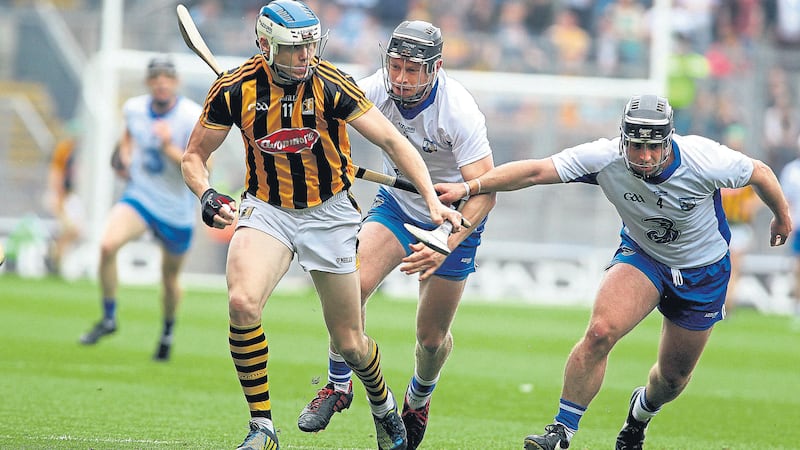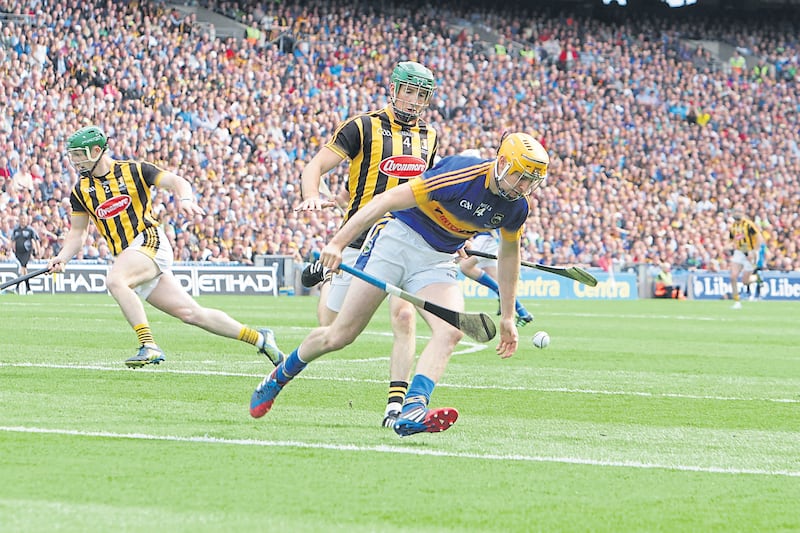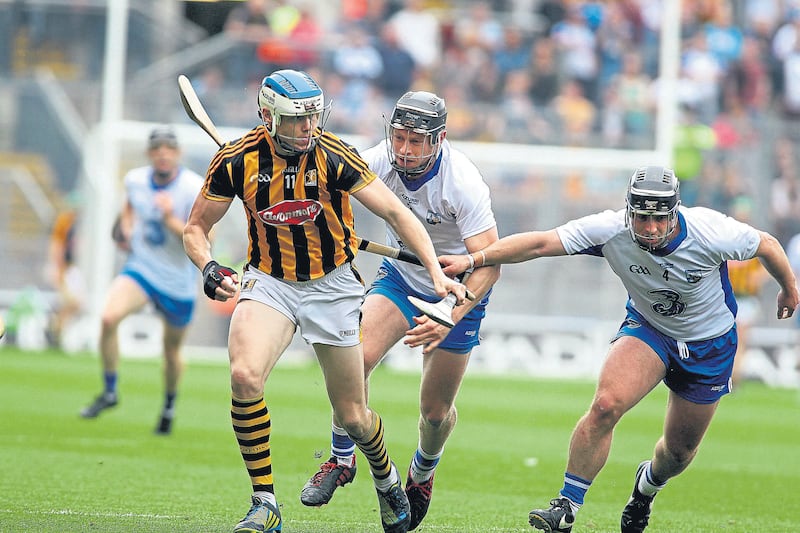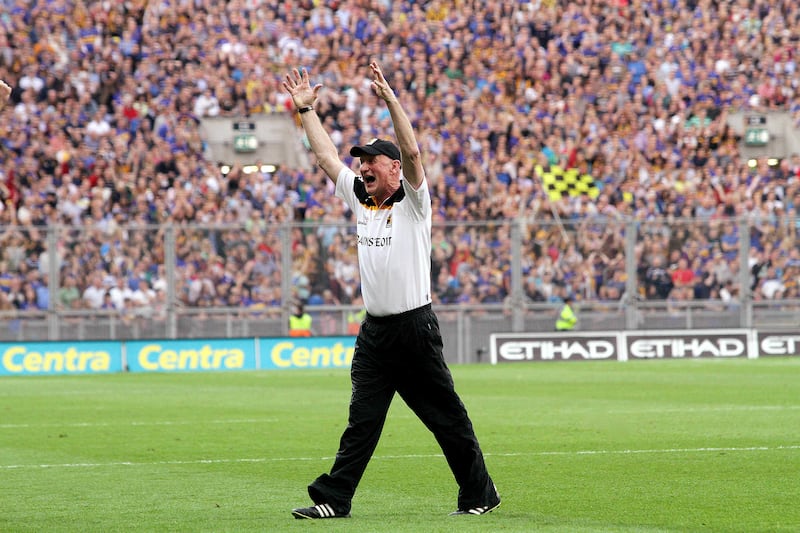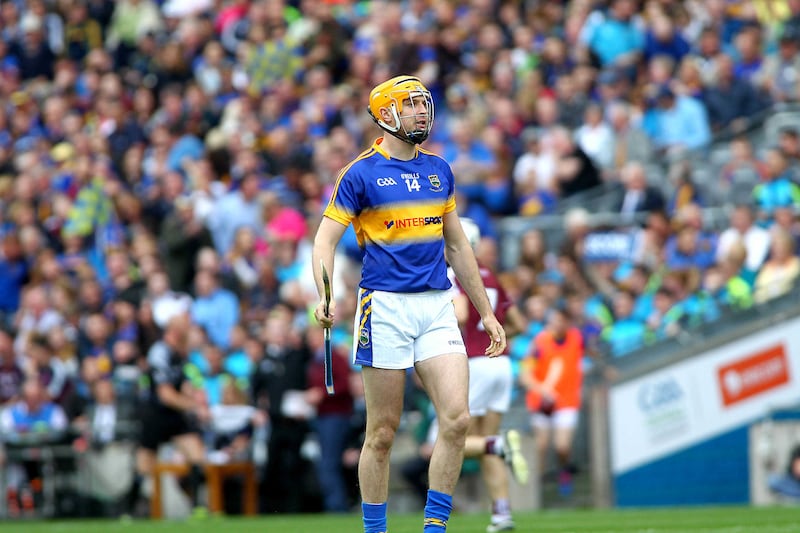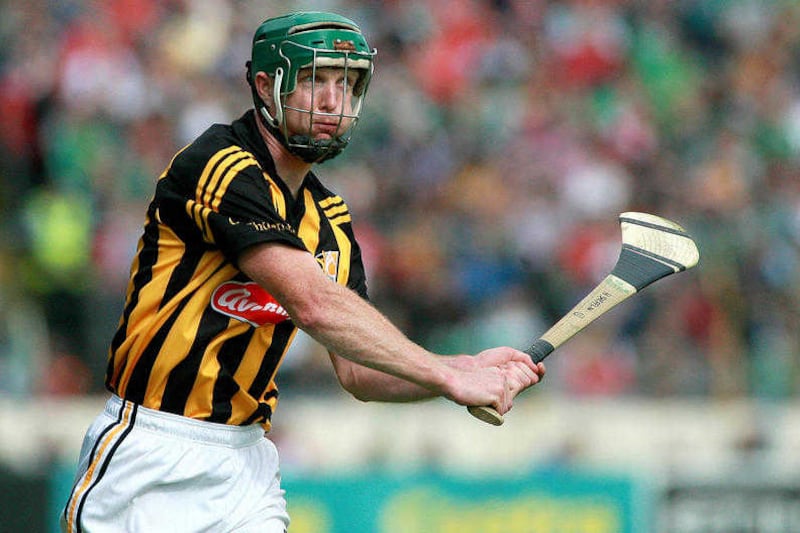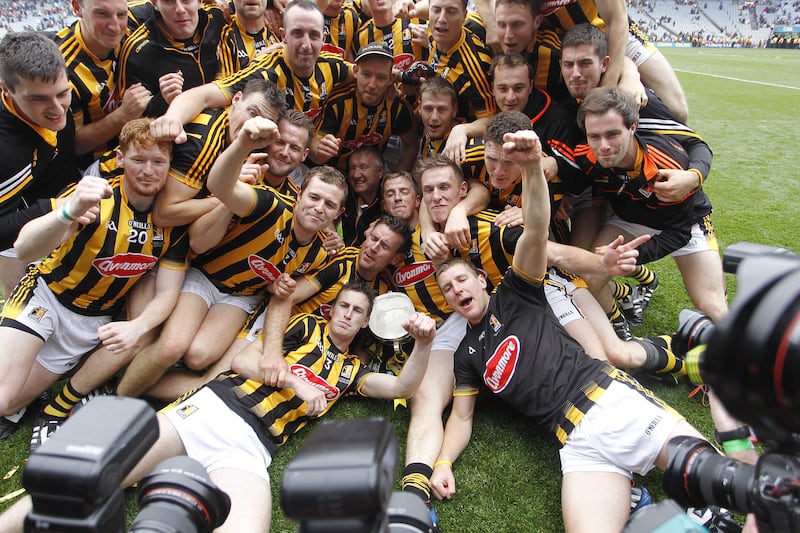In the Kilkenny-Waterford drawn All-Ireland semi-final, TJ Reid had his quietest game for Kilkenny in two years. Reid only had five possessions. He was only in possession for less than 10 seconds. Yet he wasn’t the only high profile Kilkenny player to clock such low numbers.
Michael Fennelly had just five possessions, Conor Fogarty four, Kieran Joyce six, Jonjo Farrell just one. Part of the reason was because Waterford did to Kilkenny what Kilkenny have been doing to every other team for 10 years – wiping them out in hooks, blocks and tackles. On the day, Waterford won that stat hands down on a count of 52-38.
It may be surprising to see such low numbers of possessions, and time in possession, but those figures are standard in the game now. Last January, Damien Young, former Tipperary hurling goalkeeper, current Tipp performance analyst and a lecturer in strength and conditioning in Limerick IT, delivered a presentation at the GAA’s Annual Coaching Conference titled ‘So Many Decisions, So Little Time’.
The purpose of the presentation was to make coaches reflect on how they set up their training sessions, and on how to improve how those players performed in the chaos of a Championship match.
So many decisions have to be made now in so little time. Michael Fennelly got man-of-the-match in the 2015 All-Ireland final but he only had possession for 22 seconds. Fennelly had just 12 possessions but he is the ultimate modern midfielder and his impact can never fully be measured by just possessions. Fennelly spent most of the second half operating like a wrecking ball, breaking up the play, choking space, tormenting Galway players with his physicality.
TJ Reid is a totally different player but the Hurler of the Year still only had possession for 42 seconds in the All-Ireland final. His longest possession was 4.6 seconds but Reid only had the ball in his hand for 5.75 seconds in the first half. From 17 possessions overall, Reid’s average time on the ball was 2.5 seconds.
Overall, Reid only scored one goal but he had a hand in six more scores, through either creating or being fouled for a converted free.
When you break down Reid’s stats from the entire 2015 Championship, he made a combined 71 plays, scoring 3-8 from play, and having a direct hand in 0-14. And that doesn’t include his clutch free-taking.
If you take the All-Ireland final as an average gauge, that meant Reid had possession for just over 2.5 minutes during the whole summer. So if that is the meagre amount of time the Hurler of the Year had on the ball, what did the average player have?
That stat alone underlines how players have to be so smart now in possession before being swallowed up. The stand-out stat Young used showcased as much.
In the 2015 All-Ireland final, Cillian Buckley had eight possessions in just nine seconds, an average possession time of just 1.1 seconds.
Last season, Pro Football Focus produced data from American football to show how New England Patriots quarterback Tom Brady was able to release the ball from snap to throw in an average time of 2.09 seconds. The quickest anyone had averaged since that data was first collated was Peyton Manning’s 2.24 seconds in 2014.
American football quarterbacks, though, often have ample protection from their defensive line. In hurling, players now have to get rid of the ball in the same timespan, often with zero protection, or with a gang of players hanging off them.
Hurling’s pace and physicality forces players to make decisions now in just a couple of seconds but Kilkenny’s ability to perform the skills under intense pressure has always set them apart.
Dr Liam Hennessy once showed how Henry Shefflin was in possession for only 29 seconds when winning man-of-the-match in the 2002 All-Ireland final. Kilkenny have set much of the modern agenda but the ball also shoots around now like it’s in a pinball machine.
In the 2015 All-Ireland final, the ball changed hands every 1.87 possession. Kilkenny’s highest number of successive possessions was seven, with Galway’s peaking at six. And with possession changing so frequently now, players need to be very adaptable to transition between attack and defence. It also underlines the importance of the goalkeeper, especially on puck-outs.
The game has become so tactical now, and space so condensed, that forwards, especially inside forwards, must often feel like being stuck in a traffic jam with a clamp on each wheel. Clare’s Conor McGrath was the Drawn NHL final’s stand-out player with 18 plays. When McGrath opened up in the second half of normal time, he had possession for just 22 seconds in that period.
In the modern inter-county game, a player has, on average, just 1.7 seconds to get rid of the ball once he has possession. That timeframe has decreased from four seconds to three to two to now 1.7. One second can often feel like a minute, which underlines how smart, and strong, players have to be before being swallowed up.
With so much emphasis on strength and conditioning now, there is an increased demand on coaches to adapt training activities to practise decision making. Young put a quotation on the screen from novelist EM Forster: “Spoon feeding in the long run only teaches us nothing but the shape of the spoon.”
Then Young asked: “How many coaches spoon feed their players? How many coaches tell the players what to do, where to go? Can these players think for themselves?
"That is the challenge for coaches. To design and play a game. To set up game situations. To maybe video the session and give feedback.
"Since players need to learn how to adapt in the chaos of Championship, coaches need to create that environment in training, to challenge players’ thinking, to enable players to think for themselves.
"Especially now when players have so many decisions to make, and in so little time.”
